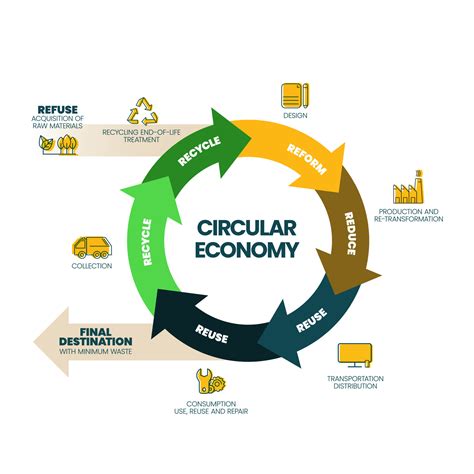ITIL and the Circular Economy: A Perfect Fit?
The circular economy, with its focus on reducing waste and maximizing resource utilization, is rapidly gaining traction. But how does this innovative model intersect with the established framework of ITIL (Information Technology Infrastructure Library)? At first glance, the connection might seem tenuous, but a closer examination reveals a surprisingly synergistic relationship. This article explores how ITIL's principles and practices can significantly contribute to achieving circular economy goals within IT organizations.
What is the Circular Economy?
The circular economy moves away from the traditional linear "take-make-dispose" model. Instead, it emphasizes designing out waste and pollution, keeping products and materials in use, and regenerating natural systems. This involves a continuous loop of designing for durability, reusability, and recyclability, minimizing resource depletion, and reducing environmental impact.
How ITIL Aligns with Circular Economy Principles
ITIL, a widely adopted framework for IT service management (ITSM), provides a structured approach to managing IT services throughout their lifecycle. While not explicitly designed for the circular economy, several of its key principles directly support its tenets:
1. Service Lifecycle Management & Product Lifecycle Management: A Parallel Approach
ITIL's focus on service lifecycle management (SLM) mirrors the circular economy's emphasis on product lifecycle management (PLM). Both frameworks highlight the importance of considering the entire lifecycle—from design and development to disposal or decommissioning—to optimize efficiency and minimize waste. By applying ITIL's SLM principles, organizations can effectively plan for the end-of-life of IT assets, facilitating reuse, refurbishment, or responsible recycling.
2. Continual Service Improvement (CSI) & Waste Reduction
ITIL's Continual Service Improvement (CSI) methodology encourages ongoing optimization of IT services. This directly translates to waste reduction in the circular economy context. By identifying and addressing inefficiencies, organizations can minimize energy consumption, reduce e-waste generation, and optimize resource allocation, contributing to a more sustainable IT infrastructure.
3. Change Management & Sustainable Innovation
ITIL's change management processes are crucial for implementing sustainable IT practices. Introducing new technologies or processes aligned with the circular economy requires careful planning and execution to minimize disruption and maximize benefits. This ensures that changes are implemented effectively and sustainably, minimizing potential negative impacts.
4. Asset Management & Resource Optimization
ITIL's asset management practices help organizations track and manage their IT assets effectively. This crucial element directly supports circular economy goals by ensuring that IT assets are used optimally, extending their lifespan, and facilitating reuse or responsible disposal when they reach the end of their useful life.
Addressing Common Concerns: Integrating ITIL and the Circular Economy
How can ITIL help manage e-waste more effectively? ITIL's asset management capabilities provide a framework for tracking IT equipment throughout its lifecycle, enabling better planning for decommissioning and facilitating responsible recycling or refurbishment programs. The change management process can be used to implement new policies for e-waste management, reducing environmental impact.
What role does ITIL play in promoting the reuse and refurbishment of IT assets? ITIL's service lifecycle management helps organizations identify assets suitable for reuse or refurbishment. By implementing robust asset tracking and management practices, companies can streamline the process of redeploying or refurbishing IT assets, extending their lifespan and reducing waste.
How can organizations measure the success of their circular economy initiatives within an ITIL framework? ITIL's continual service improvement (CSI) methodology provides a framework for measuring the effectiveness of circular economy initiatives. Key performance indicators (KPIs) can be established to track metrics such as e-waste reduction, energy consumption, and asset utilization.
Are there specific ITIL practices that are particularly relevant to the circular economy? Asset management, incident management (to quickly identify and address failures), and change management are particularly relevant, enabling proactive management of the entire lifecycle of IT assets to reduce waste and maximize resource utilization.
Conclusion: A Symbiotic Relationship
ITIL and the circular economy are not mutually exclusive; rather, they offer a synergistic relationship. By integrating ITIL's structured approach to IT service management with the circular economy's principles of sustainability, organizations can achieve significant environmental and economic benefits. This approach not only reduces environmental impact but also enhances operational efficiency and promotes long-term sustainability within IT organizations. The future of sustainable IT hinges on this strategic alignment.

